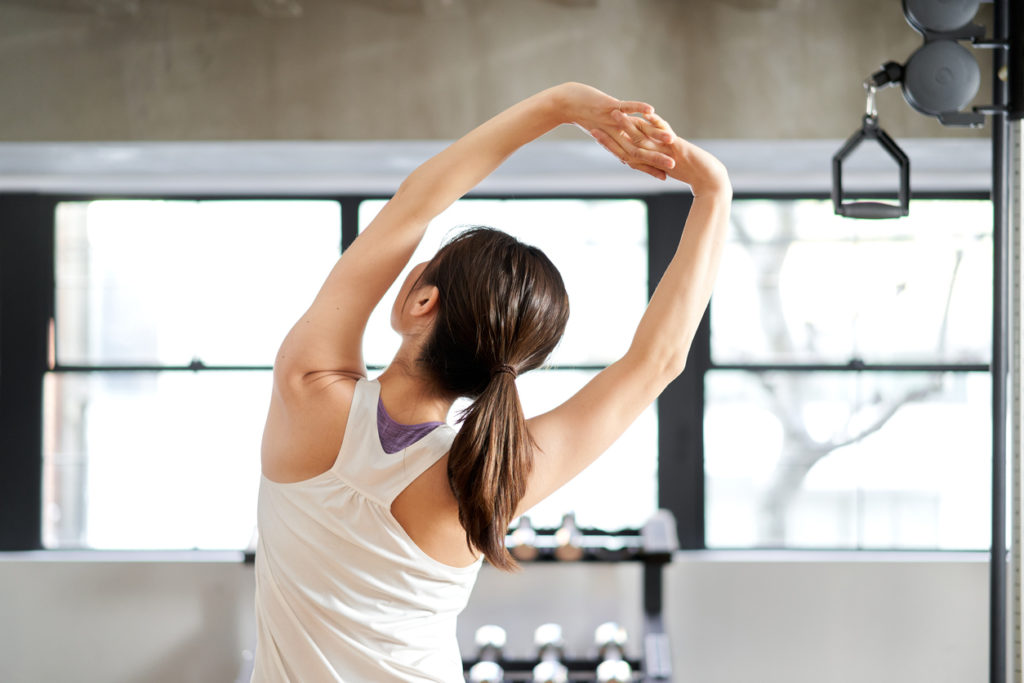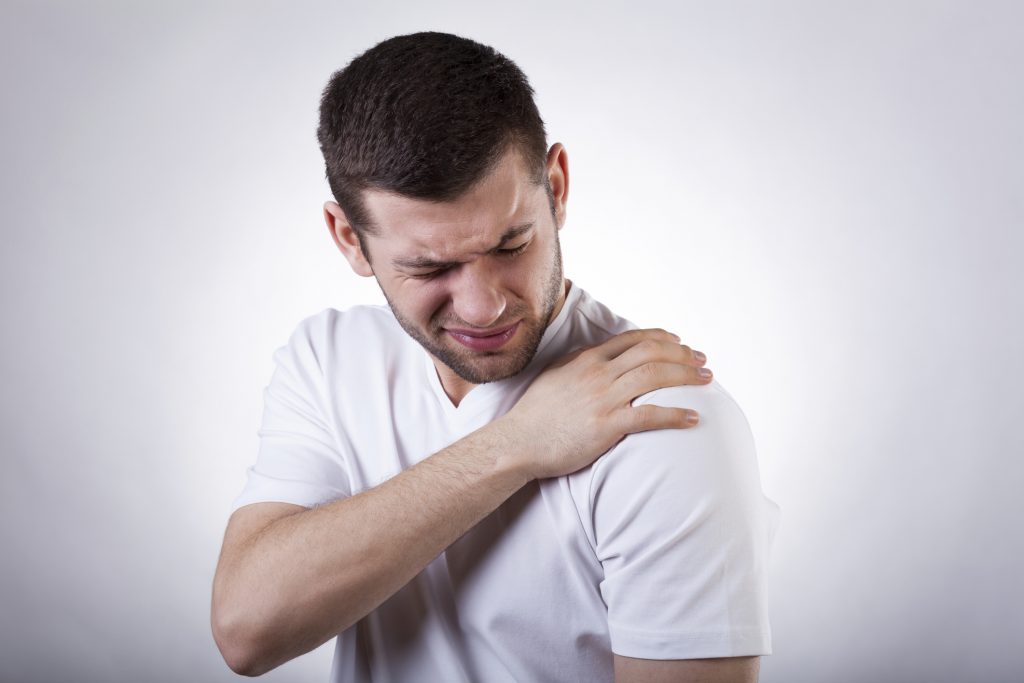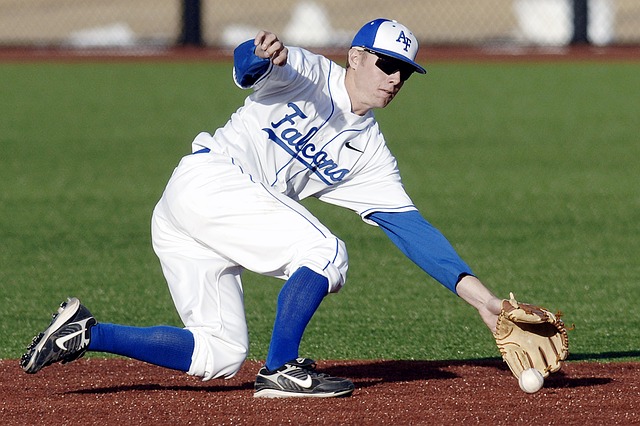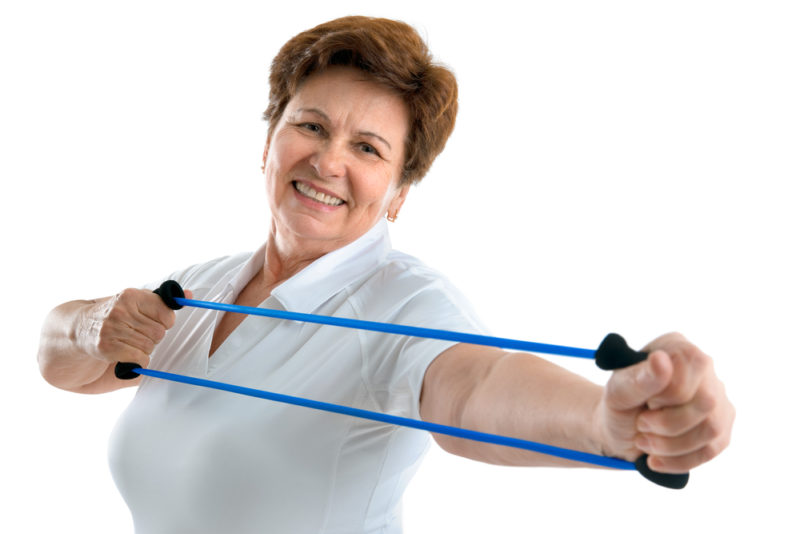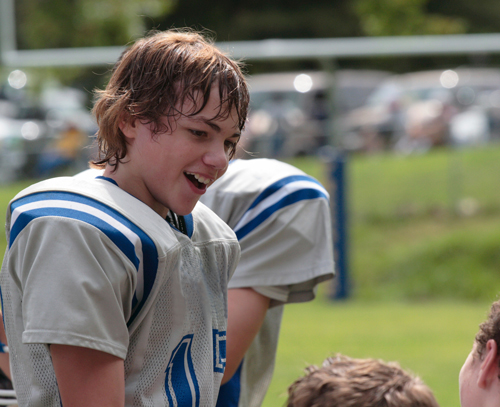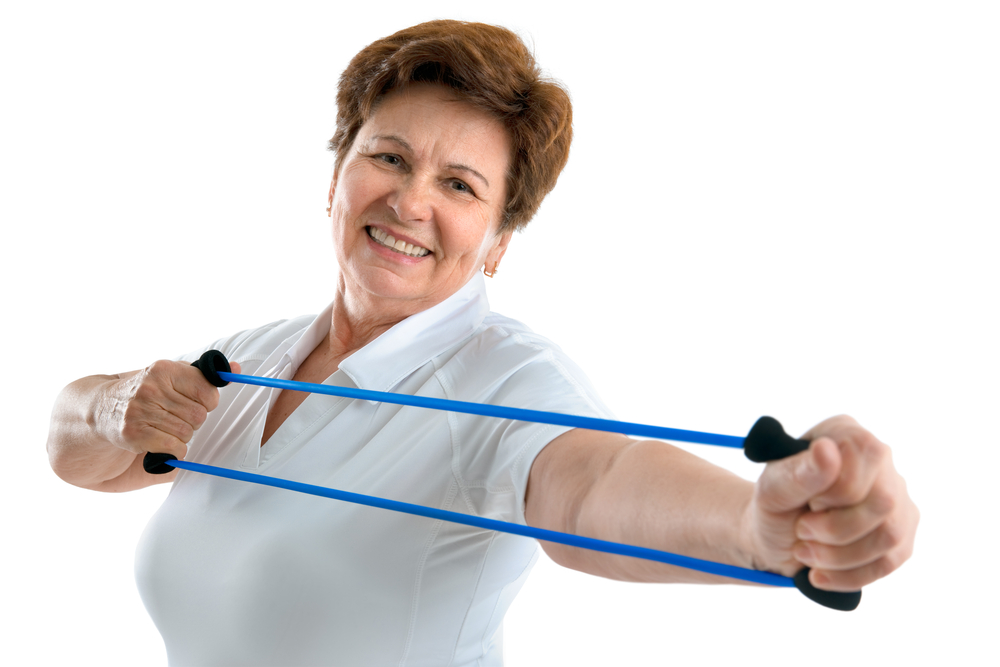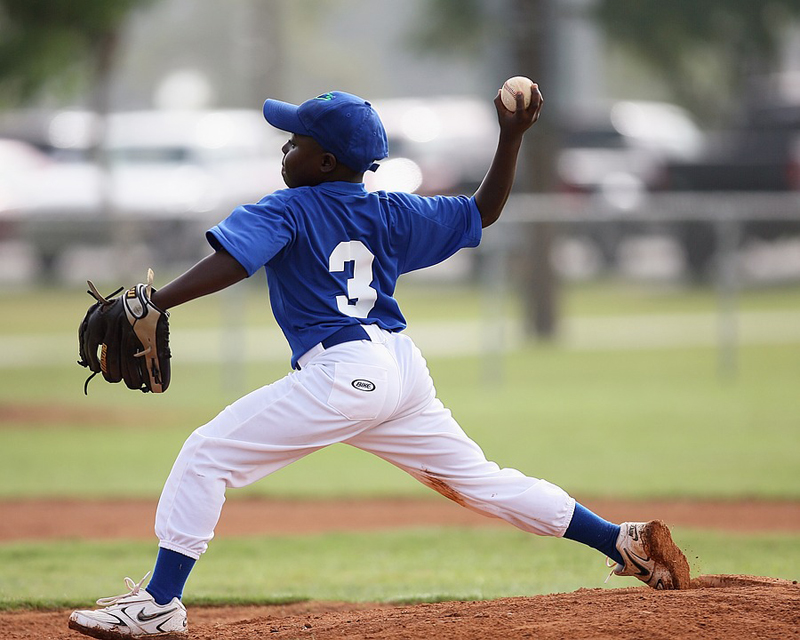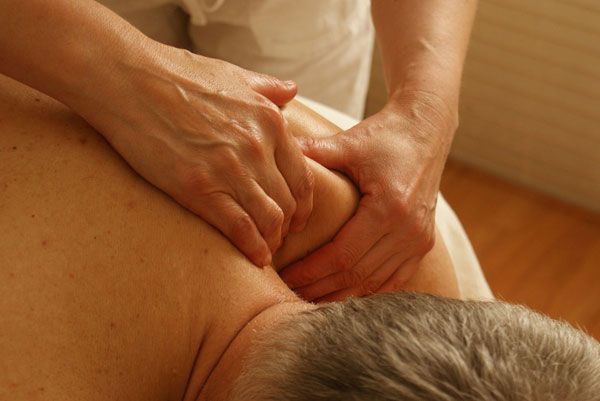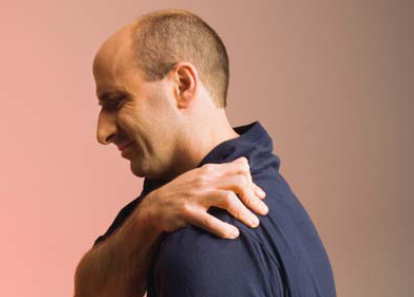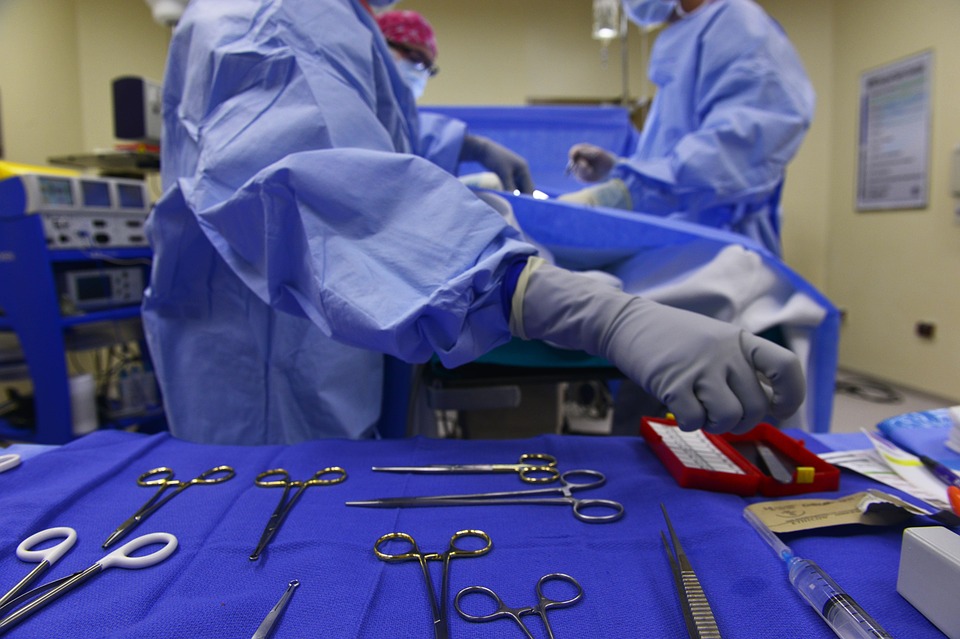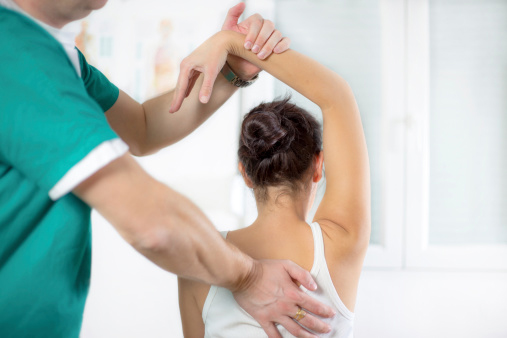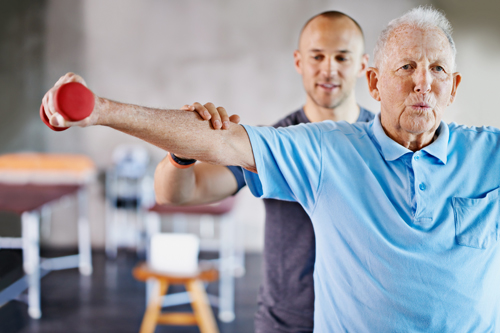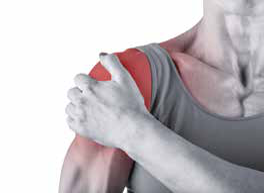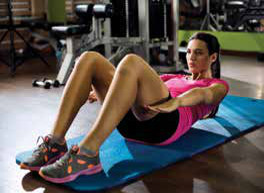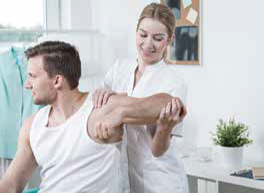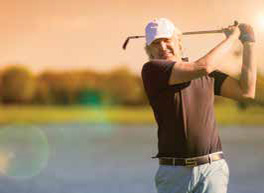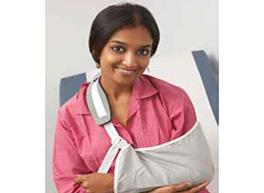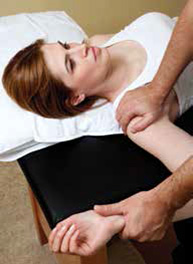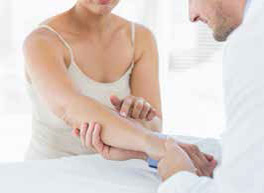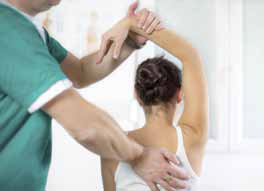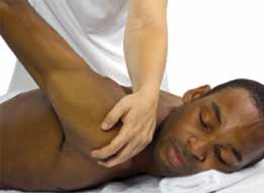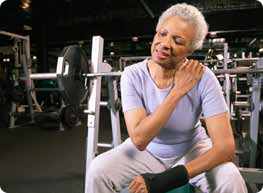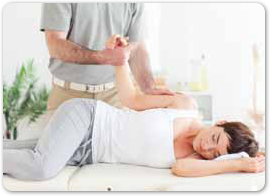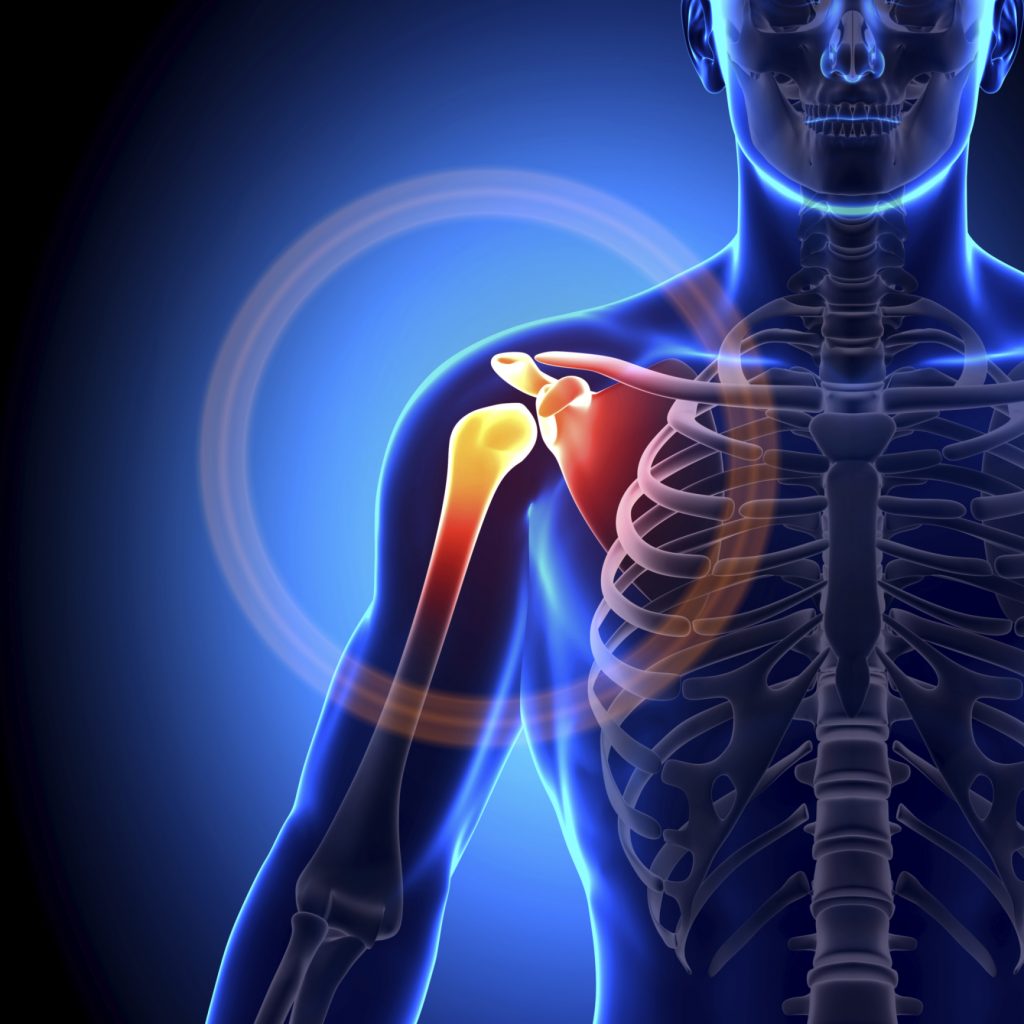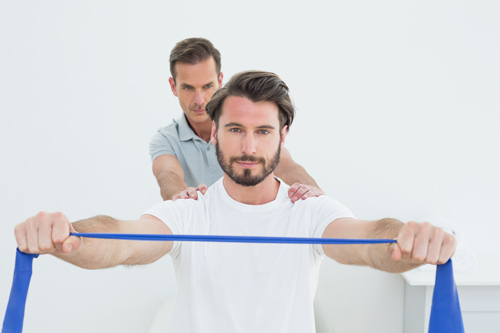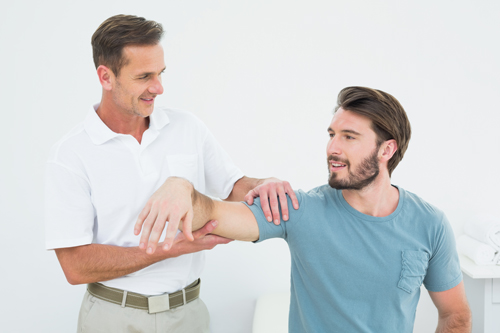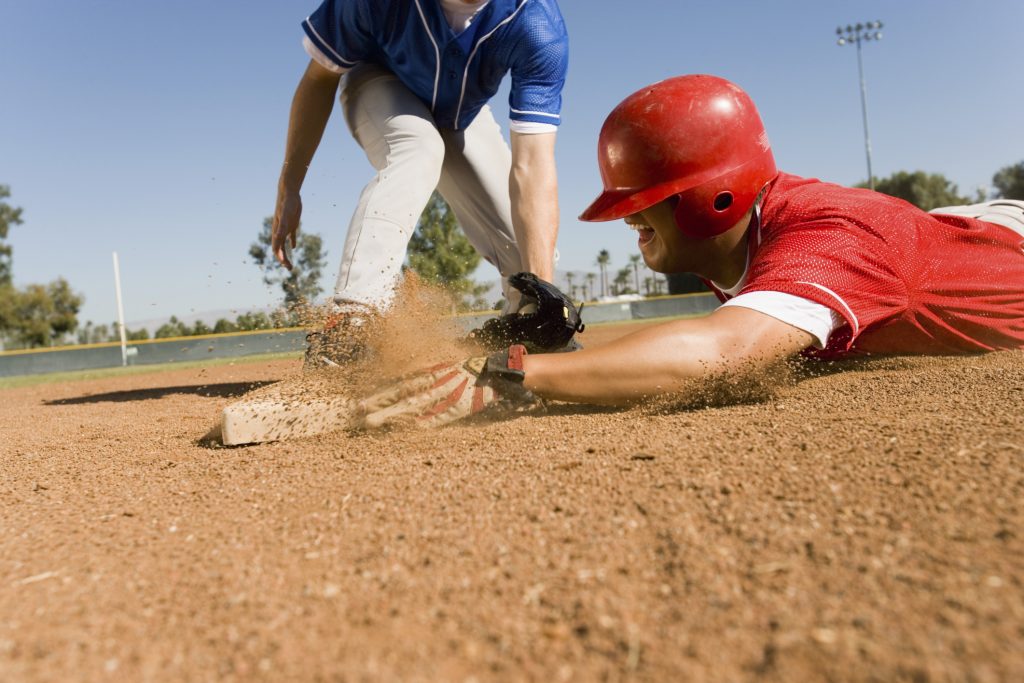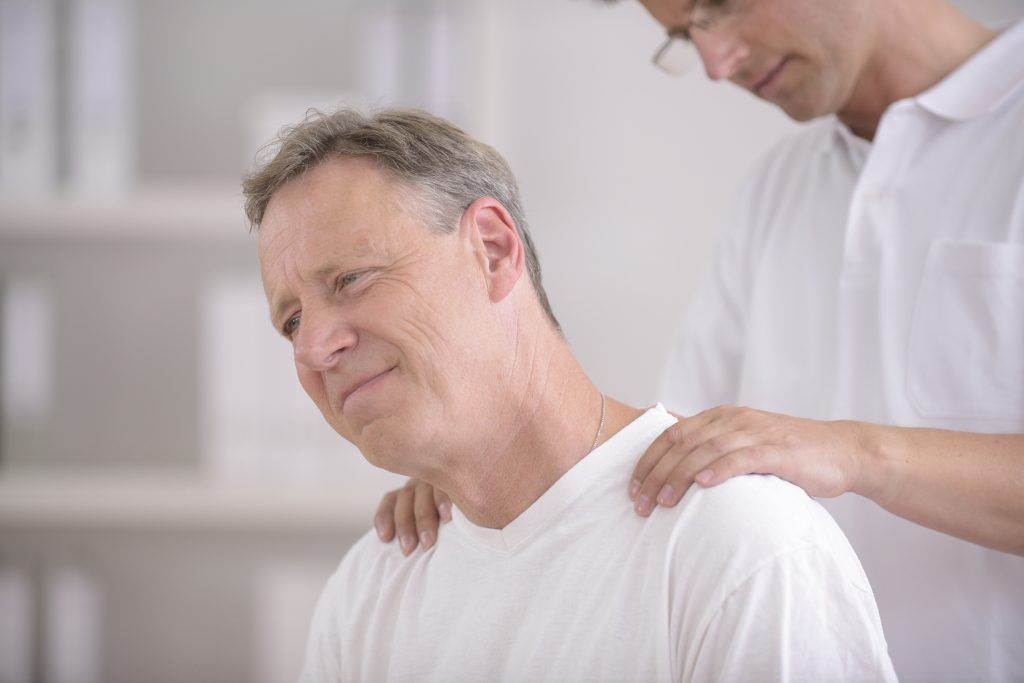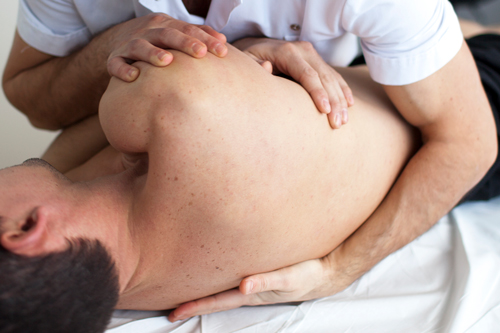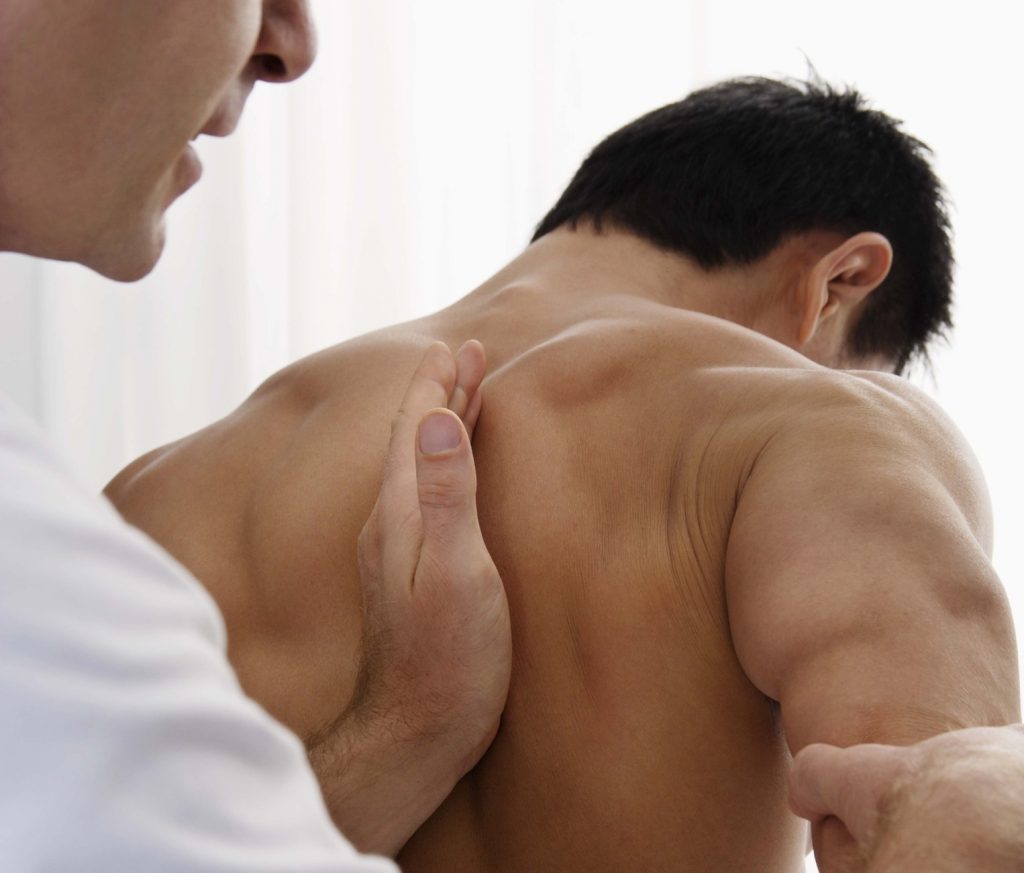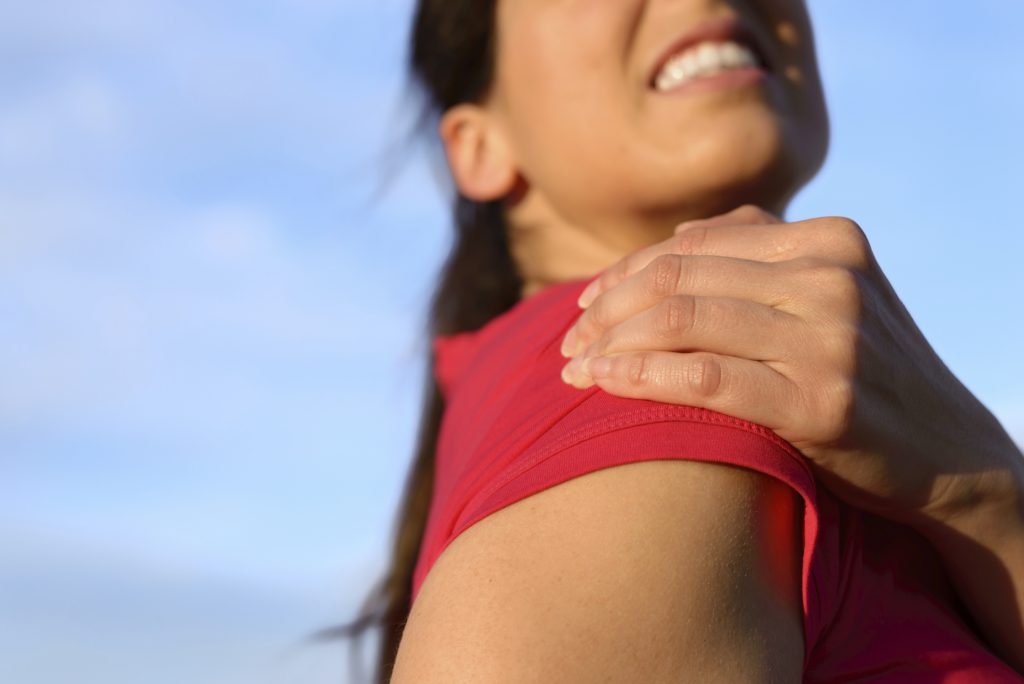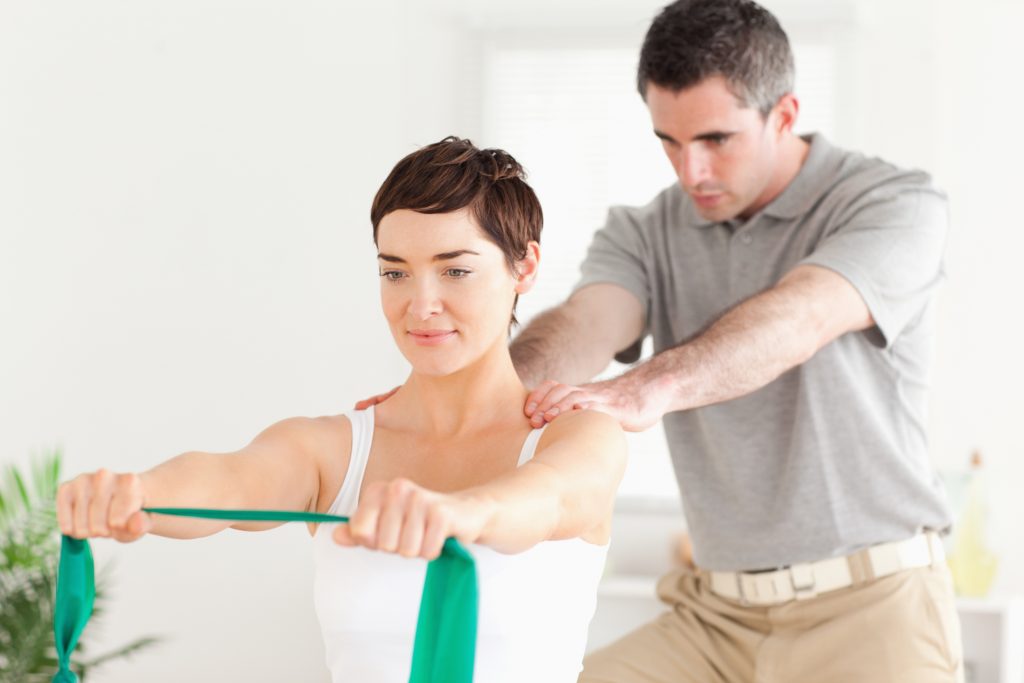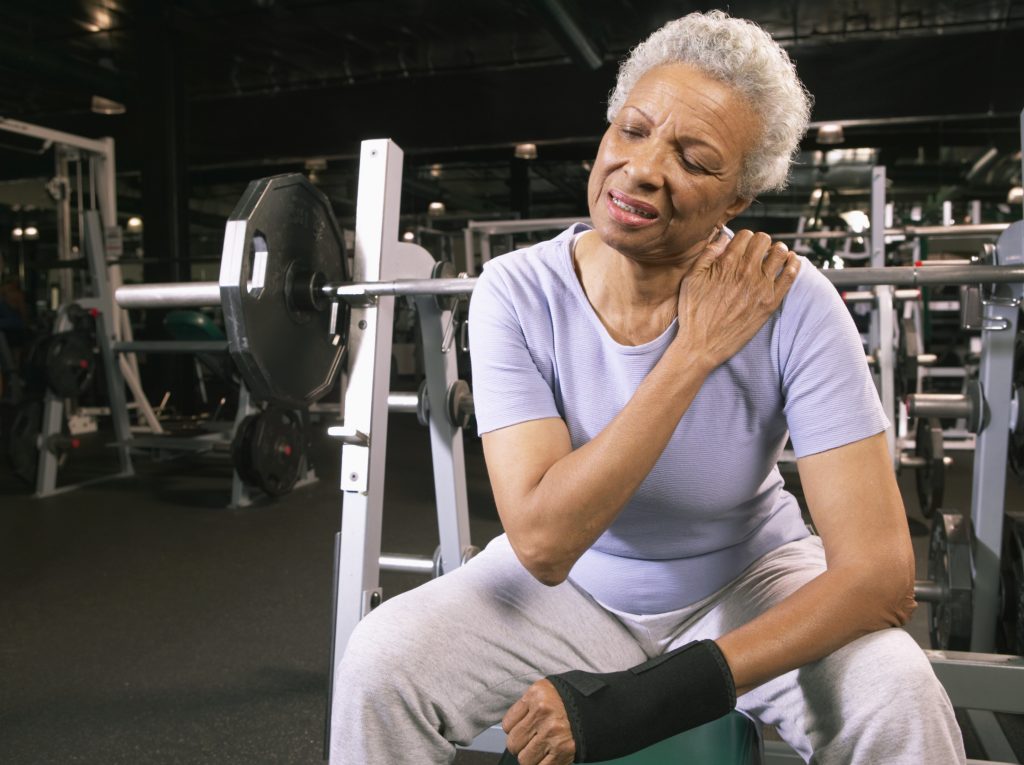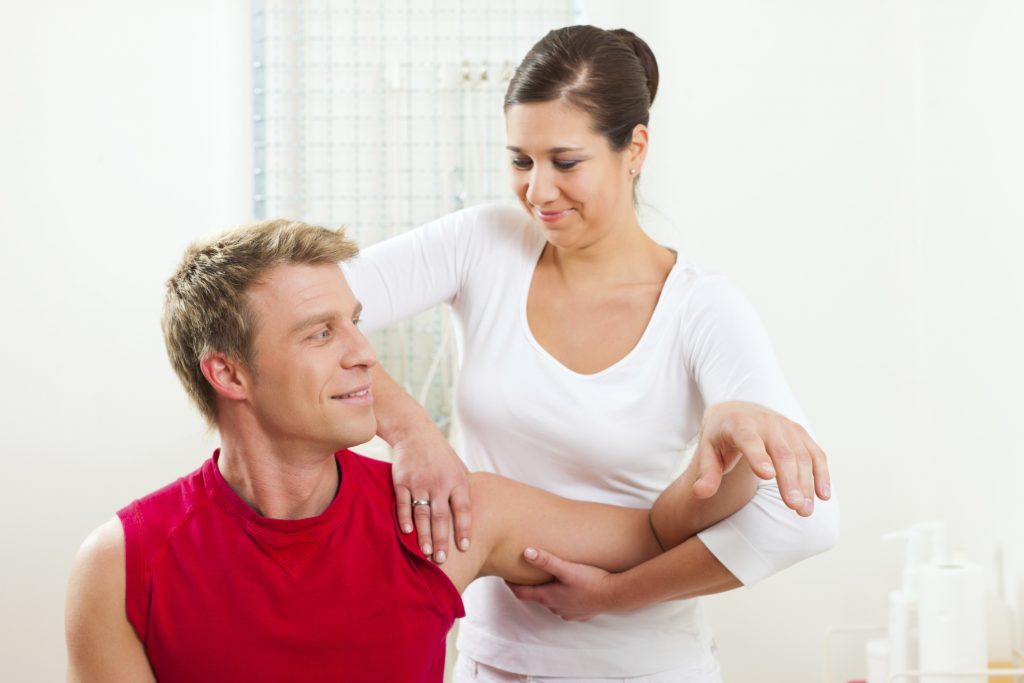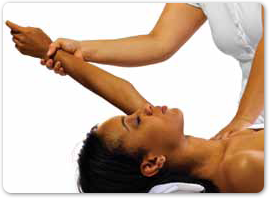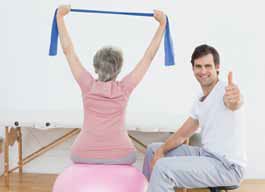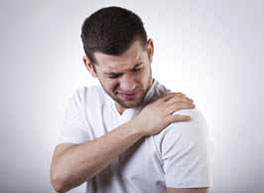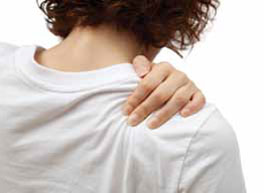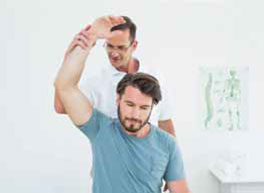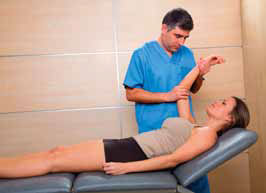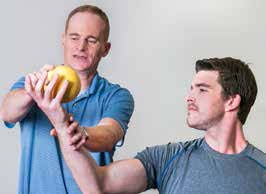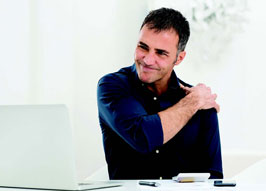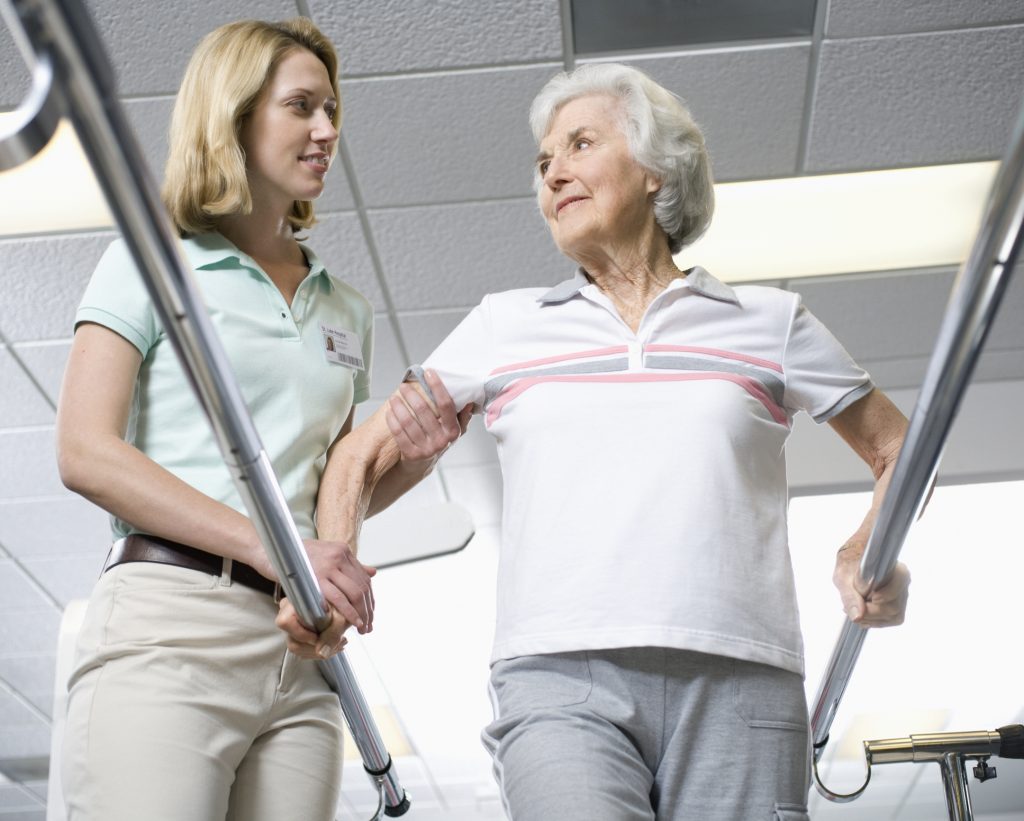From Our Blog
Upper Body – Shoulder
Physical Therapy Benefits For Frozen Shoulder
Much more common in women than men, frozen shoulder typically affects those in the 40- to 60-year age range. In fact, about 3% of the general population and 20% of those with diabetes suffer from this puzzling condition. Its technical name, Adhesive Capsulitis, comes from the area affected (the shoulder’s joint capsule), and the fact […]
Reclaim Your Shoulder Mobility
Why can’t many of us fully press our hands over our heads? Is it due to limited shoulder mobility, or just a fear of sweaty arm pits? We are in the midst of a DC summer, so we won’t throw this theory out just yet. However, maybe it is something far easier to explain: use […]
Backpack Safety 101
With summer coming to an end and the need for school supplies and backpacks returning, here are a few tips to keep in mind when shopping with your child. Continue below for backpack safety tips to make sure your kids don’t have any unnecessary back pain this year. Size Should Not Extend Above Shoulders Rest […]
Avoid Rotator Cuff Surgery with Physical Therapy
Your shoulder is a ball-and-socket joint made up of three dominant bones—the humerus, clavicle and scapula. The rotator cuff consists of a group of four tendons and associated muscles that collectively work to keep the arm bone within the socket of your shoulder blade while allowing your arm to raise and rotate. Although damage to […]
Returning to Action After Biceps Tenodesis
The biceps tendon runs from the biceps muscle through the rotator cuff and into the shoulder joint, where it then attaches to the socket. If the biceps tendon becomes inflamed or irritated, a condition called bicep tendinopathy, you may need to undergo surgery called biceps tenodesis to relieve the discomfort. Overuse of the tendon from […]
Keeping Shoulder Pain at Bay
Shoulder impingement syndrome can involve bursitis (inflammation of the shoulder’s bursa), tendinitis (inflammation of the rotator cuff tendons), calcium deposits in the tendons or any combination of the three. People at risk include those who employ repeated overhead movements—tennis players, golfers, swimmers, construction workers and, quite commonly, those who perform do-it-yourself repairs around the home. […]
Shoulder Stabilization Surgery for the Young Athlete
Shoulder dislocations are quite common in active young people. While surgery might seem like an extreme solution to a moderate problem, the procedure is actually the best chance for a problem-free shoulder in the future. A dislocation usually results in a trip to the emergency room, where the shoulder is reduced (placed back into its […]
Healing a Shoulder Injury
The shoulder joint has the widest range of movement in the body, but mobility is achieved at the expense of stability. The labrum, a ring of thick, fibrous cartilage running around the edge of the shoulder socket, holds the bones in place, extends the joint to make it more stable and provides cushioning. When it […]
Helping Your Child Prepare to Pitch for Little League
As your child prepares for the spring baseball season, your first concern should be helping him or her prevent injury. Most injuries to pitchers come from three sources: overuse, poor throwing mechanics and improper conditioning. In fact, Little League baseball has become so concerned about youth pitching injuries that they have developed pitch count regulations […]
Core Reasons to Strengthen Your Core
Everyone seems to be talking about “core strengthening,” but many people don’t know what this phrase means. The body’s “core” refers to the muscles around the abdomen, pelvis, back, shoulders, chest and hips—the body’s center of gravity—all working together in a symphony of movement. As a result, it plays a role in virtually all activities. […]
MRI Signals Rotator Cuff Changes
The four muscles that constitute the rotator cuff wrap around the shoulder joint, helping guide the shoulder through its range of motions while simultaneously providing stability to the joint. At the ends of these four muscles are tendons, which attach to the humerus, or upper arm bone. If the magnetic resonance imaging (MRI) your doctor […]
Regaining Normal Rotator Cuff Function After Surgery
Surgery to repair a torn rotator cuff is often a last-resort treatment, one that requires extensive rehabilitation to return your shoulder to full range of motion without pain. For most people, full recovery will take from 4 to 6 months, depending upon the reason for the surgery, the type of surgery and the patient’s level […]
Regaining Strength After a Rotator Cuff Repair
Whether you have had arthroscopic surgery (the least invasive kind), mini-open or open surgery to repair a rotator cuff tear, it takes at least four to six months to regain much of your strength and range of motion (ROM). Recovering well, however, is as important as recovering quickly. Therapy after rotator cuff repair proceeds in […]
Strengthening the Rotator Cuff After Surgery
When rotator cuff surgery is needed, the surgeon has to take into consideration whether or not fatty infiltration has occurred. Ideally, the surgeon can perform the surgery at an early enough stage before fatty infiltration becomes an issue. What is fatty infiltration? Sometimes, when the rotator cuff tendons have significantly pulled away from the bone […]
When It Feels Like More Than a “Cold Shoulder”
Because your shoulder provides the greatest range of motion of any joint in your body, it is more susceptible to a wide variety of injuries, including rotator cuff tears and a condition called “frozen shoulder.” Some common reasons for shoulder pain include overuse and repetitive motion, sudden trauma and degeneration due to aging. Symptoms of […]
Slapping Down a SLAP Tear
If you participate in sports that involve a repetitive overhead motion, such as baseball or weightlifting, you may be prone to developing a SLAP tear or SLAP lesion. SLAP, which stands for “superior labrum anterior to posterior,” refers to the ring of cartilage that surrounds the shoulder joint. While repetitive shoulder motions often lead to […]
Helping You Shoulder the Burden
Because so many joints, tendons and muscles come together at the shoulder to create a wide range of motion, the shoulder is vulnerable to multiple conditions that can cause pain. The most common source of pain in the shoulder is the rotator cuff. Depending on your situation, the pain may be treated with decompression surgery, […]
Clipping the Wings of a Winged Scapula
Sometimes your shoulder may hurt when you reach up to a high shelf, or it may feel weak when you dig in the garden. Perhaps your upper back feels uncomfortable when it presses against the back of your chair. These can be symptoms of scapular winging, a condition distinguished by the unusual appearance of the […]
Take the Weight off Your Shoulders
The shoulder is a complicated joint. It moves very freely, unlike a knee or elbow, because it has less bony stability. Instead, the surrounding muscles provide stability. Those muscles must be strong to help prevent injury—but injuries do happen. One of the most common shoulder injuries is impingement syndrome. The supraspinatus muscle, part of the […]
Laying Down a New Surface on Your Shoulder
Osteoarthritis is a degenerative joint disease that occurs when cartilage that cushions the joint wears down, causing pain and swelling as the ends of two bones rub together. Although you may be more familiar with arthritis in the knee and hip, it can also affect the shoulder. Although most of us know someone who has […]
Put Your Shoulder Separation Back Together
The shoulder, with the greatest range of motion of any joint in the body, is also one of the most complicated structures in the body. (The shoulder actually includes four different joints.) Because of the shoulder’s wide range of motion, complications may arise when it can’t move around freely or when the complex system of […]
Back in the Swing After Shoulder Replacement
Can you resume playing golf after total shoulder replacement surgery? The answer may well be yes. To replace the shoulder, a ball-and-socket joint, the surgeon inserts a metal prosthesis to replace the “ball” (the end of the humerus) and resurfaces the inside of the “socket” (glenoid cavity) with high-density polyethylene. Any nearby bone spurs are […]
Heal a Humerus Fracture Without Surgery
Fracturing the bone of your upper arm—medically known as a humerus fracture—can be a painful and frightening experience, especially because the most common cause of this type of fracture is a bad fall. It may seem like a severe enough break to require surgery, but, in reality, most humerus fractures can be treated by nonsurgical […]
Tobacco Use and Shoulder Surgery
Smoking is linked to heart disease, stroke and several forms of cancer, but its effects on orthopedic surgery outcomes are less widely known. If you are scheduled for rotator cuff or labral surgery, chances are that your physician has emphasized the importance of not smoking before the surgery. This will not only improve your overall […]
Redo for a Rotator Cuff Re-tear
If you have already gone through rotator cuff surgery, the last thing you want to think about is doing it all over again. Unfortunately, many patients do suffer tears of the same tendons that caused them to need surgery in the first place. Most of the time, this is not the surgeon’s fault, nor does […]
Physical Therapy for a Pinched Nerve
Imagine holding a straw in your hand and squeezing the middle as you sip a beverage. You will notice that not much liquid is able to pass through the straw and reach your mouth. Essentially, this is what happens when you have a “pinched” nerve. A pinched nerve ensues when a nerve is compressed, and […]
When Your Shoulder Blade Is “SICK”
Do you have a “SICK” scapula? No, not sick with a fever or a cold, but SICK—an abnormal condition of the shoulder blade. This condition is characterized by Scapular malposition: The scapula has moved to an abnormal position on the rib cage. Inferior medial border prominence: The scapula protrudes abnormally along the back. Coracoid pain […]
Restitching a Torn Rotator Cuff
Your rotator cuff is a collection of muscles and tendons located where your upper arm meets your shoulder socket. Its primary purpose is to provide structural support to your body so that you can perform a wide range of arm movements, especially ones that involve overhead motion. These include manual labor activities—painting and carpentry, for […]
Withdrawing Calcific Deposits in the Rotator Cuff
Most often a ffecting women between the ages of 35 and 65, rotator cu ff calcifi c tendonitis is a common cause of shoulder pain. It happens when calcium phosphate is deposited in the rotator cu ff tendons of the shoulder, and it can be very painful. Calcifi c deposits can form in the rotator cuff , a group of four […]
Shrug Off Your Shoulder Pain
Pain across the shoulder blades or weakness in the upper arms could be symptoms of C5 radiculopathy, a condition caused by the malfunction of a nerve in the neck that affects the shoulders and arms. Symptoms include pain of the shoulders and upper arms, and weakness in those areas, especially when you attempt movement. The […]
What You Should Know About Arthroscopy
Arthroscopy is a procedure used to investigate a multitude of joint-related symptoms by actually looking inside the joints. Similar to a telescope with a light source, the light aspect is necessary to “light up” the joints and to magnify the structures contained within the joint. Arthroscopy is typically performed under local or general anesthesia and […]
Reverse Total Shoulder Replacement
Those who have suffered from severe arthritis for many years may receive a doctor recommendation for a “reverse total shoulder replacement” procedure. The term could be a new and confusing one for you to hear, but the procedure will offer enough relief to allow us to design a synergistic program to: Enhance range of movement; […]
PT for Shoulder Dislocations
If you have dislocated your shoulder, choosing the best mode of treatment to get you moving and free from pain as quickly as possible can be a real challenge. One kind of shoulder dislocation, multidirectional shoulder instability, tends to occur in younger adults and may need surgery, along with physical therapy, to provide relief. Care […]
Don’t Let Shoulder Pain Burden Your Sleep
If shoulder pain keeps you up at night, then it is time to determine the underlying problem and develop a strategy to get a better night’s sleep. For many people, shoulder pain that is particularly noticeable at night is associated with rotator cuff irritation. The rotator cuff includes the muscles and their tendons that keep […]
Nothing Funny About a Humerus Fracture
Say you have fractured your humerus, the bone in the upper arm that attaches the limb to the shoulder, but your physician does not think that surgical intervention is the best course of action. This decision may depend upon the part of the humerus involved. You might have a distal fracture , occurring near the […]
Treating a SICK Scapula
When a scapula, or shoulder blade, is described as SICK, it doesn’t mean ill; it is actually an acronym invented by researchers/physicians who observed a syndrome involving the shoulder areas of professional baseball players. It stands for Scapula Internal rotation, Coracoid pain and Dyskinesia, the conditions that make up this syndrome. Because the scapula is […]
Relieving Shoulder Impingement Through Physical Therapy
Your physician has diagnosed you with shoulder impingement, but what does that mean? The classic symptom of the condition is pain when you raise your arm to shoulder height. The motion causes a narrowing of the space between the acromion (the bone at the top of the shoulder), the tendons of the rotator cuff that […]
Surgical Stabilization for Frequent Shoulder Dislocations
A dislocated shoulder is a tricky opponent, and the younger you are, the trickier it can be. When a dislocation occurs (often from falling at on your hand or from high-impact sports), shoulder ligaments are injured in the process. Unfortunately, these ligaments do not heal well, often leaving you at high risk for future dislocations. […]
Banishing Stiffness and Pain After Shoulder Surgery
You had surgery to correct a problem in your shoulder, so it is a cruel stroke of irony to discover that the surgery has caused pain, stiffness, and arthritis to develop. In the past, shoulder surgeries, especially those like the Magnuson Stack or the Putti-Platt procedures, were designed to stabilize the repaired shoulder by limiting […]
Shoulder Dislocation: Surgery or Therapy?
There is some disagreement among physicians about when shoulder dislocation should be treated quickly with surgery and when the problem should be managed more conservatively, at least at first. Obviously, every case is different. Generally, young athletes – especially males under 20 years who want to return to a competitive sport that involves overhead movements […]
“Filling” the Gap After Rotator Cuff Surgery
You may hear the term “fatty infiltration” for the first time when you see a physician about a rotator cuff injury. After you tear the tendon in your shoulder, a large gap remains between the tendon and the bones, keeping the shoulder muscle from performing its usual actions of shortening and lengthening. The body attempts […]
Rotator Cuff Tears: Don’t Shoulder Them Alone
The rotator cuff is a complex of four muscles and the tendons that attach them to the three bones that make up the shoulder joint. A tear in any one of the tendons is extremely common and can cause pain, weakness and limited range of motion. Tears in rotator cuff tendons develop in two ways. […]
Repair Your Rotator Cuff Through Physical Therapy
Rotator cuff tears are common, and recovery can take a long time. But do all rotator cuff tears need to be surgically repaired? After reviewing 137 studies on the outcomes of rotator cuff treatments, the Agency for Healthcare Research and Quality, a division of the federal Department of Health and Human Services, said no. The […]
The Big Thaw: Unfreezing a Shoulder
“Frozen shoulder” is the casual term for adhesive capsulitis. The shoulder capsule is a protective layer of strong connective tissue, normally flexible, that surrounds the joint. When sti ff bands called adhesions develop within the tissue, the result is restricted movement. In addition, the quantity of lubricating liquid (synovial fl uid) within the joint may diminish, making […]
A Bone Graft to Rebuild Your Shoulder
If your shoulder is prone to recurrent dislocations, a surgery known as a Bankart procedure is often used to stabilize the joint. However, that surgery often fails because the repair is not strong enough or the shoulder socket is damaged. In that case, a shoulder bone graft may be required. In a shoulder bone graft, […]
Dive Back in After Swimmer’s Shoulder
Are you an avid swimmer now sidelined by swimmer’s shoulder? You have plenty of company. Swimmer’s shoulder can develop from overuse, a change in your stroke or an increase in the intensity or duration of your swimming activity. Swimmers tend to have above-average flexibility and range of motion in the shoulder—that’s great for swimming. But […]
Keeping the Fat Out of Your Rotator Cuff
For most of us, the idea of “fighting fat” is nothing new. But fat is not just an enemy of your waistline. It’s an enemy of your muscles, too—especially when you are recovering from rotator cuff surgery. When the rotator cuff tendon is torn, a gap between the tendon and bones is formed. Your body […]
Shrugging Off a Shoulder Dislocation
It is a classic movie scene: The hero’s shoulder gets knocked out of joint. With a nonchalant grunt, he pushes it back into place and goes about his business saving the world. Well, that might work in the movies, but in real life a dislocated shoulder is a very serious problem that cannot be simply […]
When Your Shoulder Goes Snap, Crackle, Pop
Those popping and crackling noises heard when you move your shoulder are normal, most of the time, but should these sounds and sensations be accompanied by pain, swelling and loss of joint function, you may be experiencing degeneration of the acromioclavicular (AC) joint. Smooth surfaces of the cartilage that line the shoulder degrade, and the […]
Knitting Up Your Broken Collarbone
Better known as a broken collarbone, a clavicle fracture is a common injury among people of all ages. Despite its location, the collarbone is not part of the neck, but rather a bone that connects the rib cage and the shoulder blade. A break in the collarbone often occurs in the middle of the bone. […]
Replacing Your Shoulder in Reverse
In conventional shoulder replacement surgery, the surgeon fits a plastic cup into the shoulder socket and attaches a metal ball to the top of the upper arm bone. But for some patients, especially those with muscle damage around the shoulder or large rotator cuff tears who have developed a complex type of shoulder arthritis, conventional […]
Putting Your Rotator Cuff Back Together
Rotator cuff tears, a common injury, send as many as 2 million Americans to their physicians’ offices every year. While many cases can be treated with conservative measures, such as physical therapy, others require rotator cuff repair surgery. One factor affecting surgery outcome is the presence of fat in place of muscle, a condition that […]
Shoulder the Work of a Tuberosity Fracture
At the head of the arm’s humerus bone, where the muscles of the rotator cuff are attached, is a rounded section called the greater tuberosity. A dislocation or a fall on the shoulder can cause the greater tuberosity to fracture, leading to pain when lifting the arm or moving the shoulder, and limiting your range […]
Relieving Dowager’s Hump Through Exercise
Older individuals with osteoporosis often develop spinal kyphosis, resulting in the formation of a pronounced hunchback, sometimes called a “dowager’s hump” (kyphos means “hump” in Greek). Kyphosis occurs because a spinal vertebra, usually at the level of the rib cage, becomes weak and porous. Eventually, something as innocent as a sneeze or cough causes the […]
Subscribe to Monthly Health & Wellness Tips
